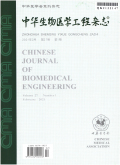低温等离子射频消融术联合调强放疗在中晚期喉癌患者术后中的应用及其对凝缩蛋白复合体Ⅰ亚单位H、胸苷激酶1、上皮性钙粘附蛋白的影响
Use of low-temperature plasma radiofrequency tissue volumetric reduction combined with intensity-modulated radiotherapy in postoperative patients with advanced laryngeal cancer and its effect on condensin I complex subunit H, thymidine kinase 1, and E- cadherin
摘要研究低温等离子射频消融术(RFTVR)联合调强放疗(IMRT)在中晚期喉癌患者术后中的应用及其对凝缩蛋白复合体Ⅰ亚单位H(NCAPH)、胸苷激酶1(TK1)、上皮性钙粘附蛋白(E-cadherin)的影响。将喉癌患者95例作为研究对象,分为观察组以及对照组,所有患者均采取RFTVR进行治疗,观察组患者在此基础上联合采用进行调强放疗治疗。术后两组患者均进行顺铂注射液化疗治疗。比较两组患者的治疗效果、吞咽功能、嗓音功能、NCAPH、TK1、E-cadherin水平以及不良反应之间的差异。研究发现中晚期喉癌患者采用RFTVR联合IMRT治疗,患者的NCAPH、TK1、E-cadherin显著下降,治疗效果显著。
更多相关知识
abstractsThe purpose of this study was to investigate the use of low-temperature plasma radiofrequency tissue volumetric reduction (RFTVR) plus intensity-modulated radiotherapy (IMRT) in postoperative patients with advanced laryngeal cancer and its effect on condensin I complex subunit H (NCAPH) , thymidine kinase 1 (TK1) , and E- cadherin. Ninety-five patients with laryngeal cancer, assigned to the study group or control group, underwent RFTVR. In addition to RFTVR, the patients in the study group also received IMRT. After surgery, the both groups were given chemotherapy based on cisplatin regimen. Differences in treatment efficacy, swallowing function, vocal cord function, NCAPH, TK1 and E-cadherin levels, and adverse reactions were compared between the two groups. This study shows that RFTVR plus IMRT leads to significant reductions in NCAPH, TK1 and E-cadherin, and offers better treatment efficacy in patients with advanced laryngeal cancer.
More相关知识
- 浏览0
- 被引1
- 下载0


相似文献
- 中文期刊
- 外文期刊
- 学位论文
- 会议论文



 换一批
换一批 换一批
换一批



